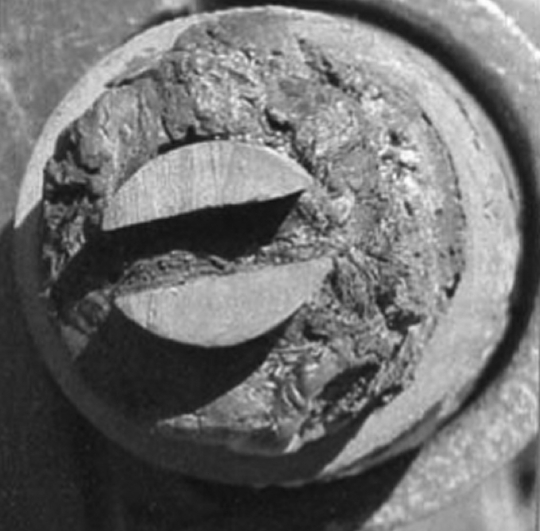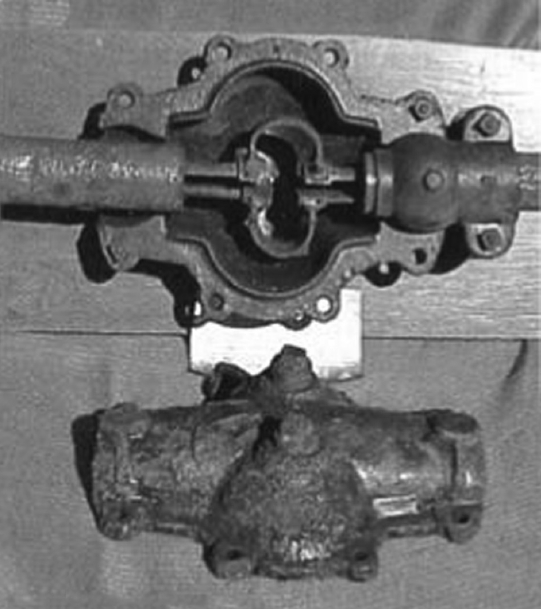电线电缆网 > 专业英语|国际贸易 > 有奖翻译(完整版)
有奖翻译 - 无图版
appleseden --- 2016-11-08 10:29:54
1
软件翻译不评分
图片只能通过附件上传,有兴趣的朋友自己下载吧
1.4 DISTRIBUTION OF ENERGY FOR LIGHTING
Edison planned his first installation in a densely populated area of lower Manhattan in New York City, and decided that an underground system of distribution would be necessary. This took the form of a network supplied by feeders radiating from a centrally located direct current (DC)-generating station to various feed points in the network. Pilot wires were taken back to the generating station from the feed points to give the operator an indication of voltage conditions on the system. Regulation was controlled by cutting feeders in, or out, as needed. At a later date, a battery was connected in parallel with the generator to guard against a station outage (Figures 1.1 and 1.2).
Gutta-percha, which had proved to be a satisfactory material for insulating the telegraph cables, was not suitable for the lighting feeders because of the softening of the material (a natural thermoplastic) at relatively high operating temperature. Experience with other types of insulation had not been sufficient to provide any degree of satisfaction with their use. The development of a cable sufficiently flexible to be drawn into ducts was accordingly considered a rather remote possibility. Therefore, Edison designed a rigid, buried system consisting of copper rods insulated with a wrapping of jute. Two or three insulated rods were drawn into iron pipes and a heavy bituminous compound was forced in and around them. They were then laid in 20-foot sections and joined together with specially designed tube joints fromwhich taps could be taken if desired. The Edison tube gave a remarkably satisfactory performance for this class of low voltage service.
The low voltage and heavy current characteristics of DC distribution were limited to the area capable of being supplied from one source if the regulation was to be kept within reasonable bounds. The high first cost and heavy losses made such systems uneconomical for general distribution. Accordingly, they were developed in limited areas of high-load density such as the business districts of large cities.
In the outlying districts, alternating current (AC) distribution was universally employed. This type of distribution was developed largely as a result of the work in 1882 of Lucien Gaulard and J. D. Gibbs, who designed a crude AC system using induction coils as transformers. The coils were first connected in series, but satisfactory performance could not be obtained. However, they were able to distribute electrical energy at a voltage considerably higher than that required for lighting and demonstrate the economics of the AC system. This system was introduced in the United States in 1885 by George Westinghouse, and served as the basis for the development of workable systems. An experimental installation went into service at Great Barrington, Massachusetts, early in 1886. The first large-scale commercial installation was built in Buffalo, New York, the same year.
The early installations operated at 1,000 volts. Overhead construction was considered essential for their satisfactory performance and almost universally employed. This was also true of the street-lighting feeders, that operated at about 2,000 volts. In Washington and Chicago, overhead wires were prohibited, so a number of underground lines were installed. Many different types of insulation and methods of installation were tried with little success. Experiments with underground conductors were also carried out in Philadelphia. The 1884 enactment of a law forcing the removal of all overhead wires from the streets of New York City mandated the development of a type of construction that could withstand such voltages. It was some time, however, before the overhead high-voltage wires disappeared. In 1888, the situation was summarized in a paper before the National Electric Light Association [1] as follows:
No arc wires had been placed underground in either New York or Brooklyn. The experience in Washington led to the statement that no insulation could be found that would operate two years at 2,000 volts. In Chicago, all installations failed with the exception of lead covered cables which appeared to be operating successfully. In Milwaukee, three different systems had been tried and abandoned. In Detroit, a cable had been installed in Dorsett conduit, but later abandoned. In many of the larger cities, low voltage cables were operating satisfactorily and in Pittsburgh, Denver and Springfield, Mass., some 1,000 volt circuits were in operation. (Underground Systems Reference Book 1931, 2).


ljn9876 --- 2016-11-08 11:26:54
2
Munger --- 2016-11-08 18:04:52
3
1.4照明电能的传输
爱迪生在纽约曼哈顿人口密集地区开始了他的第一次电力照明计划,他决定使用地下电力传输系统。这个电力网络从发电站输入直流电能到网络中的各个节点。并通过引流线回归到供电站,为整个系统的供给端提供一个相对的电压。通过供电的通断实现控制。后来,又在系统中并联了一个电池,做为发电站断电时的备用电源。
杜仲橡胶适用于电报线路,但也被证明不适用于照明线路。因为杜仲橡胶天然的热塑性,在导体承受电流发热时,会变得很软。经试验,其它的绝缘材料也不以有充分满足要求。以导管的方式开发一个远距离的灵活的传送线路,也是不可能的。因此,爱迪生开发了一种刚性的,地下敷设的,以铝杆为导体,黄麻纤维做为绝缘的电缆。一个铁管中穿入2到3根绝缘线,并压入大量的沥青填充。每20英寸一段的电缆连接到一起,并用特殊设计的套管连接。如果需要,接头上有可以打开的塞子。爱迪生的管状电缆,在低压传输方面,取得了极大的成功。
低压和大电流的传输特性,限制了直流输送的有效区域。过高的造价和损耗使用这种方式的传输没有经济性。因此,这种系统只能在大城市密集的商业区使用。
在其它区域,交流电被广泛的应用。1882年卢西恩.加勒德和J.D.吉布斯利用感应线圈,设计了一个粗糙的变压器。这个必明,极大的推动了电能传输的发展。这个线圈最初被串联在线路中,但没有取得良好的效果。但是它却能够提高电压,在交流系统中,可以更加经济的传输电能。在1885年乔治.威斯汀豪斯将这项技术引入美国,服务于政府的工作系统。1886年,在马塞诸塞州的大巴灵顿,一个试验线路开始运行。同年,在纽约的布法罗,第一个大规模的商来项目完成建设。
早期的线路运行在1000V的电压。架空的线路被认为是一种安全可靠的结构,并被广泛的应用。路灯照明供电能够运行在2000V。在华盛顿和芝加哥架空电缆被禁用,所以敷设了大量的地下电缆。各种各样的绝缘结构很少有成功的。地下导体的试验在费城也同样在进行着。在1884年,纽约颁布法律强制拆除架空线缆,因此开发一种能够承受一定电压的地下电缆势在必行。在架空电缆消失之前,这项工作就已开始进行。在1888年,国家电灯协会以的报纸上就有如下描述:
在纽约和布鲁克林,没有地下布电系统。在华盛顿的试验证明,没有一种绝缘可以在地下稳定运行两年。在芝加哥除了铅套电缆,其它的绝缘结构都是失败的。在密尔活基,试验了三种不同的绝缘结构,但最终都放弃了。在很多大一点的城市,低压电缆可以稳定的运行,一些1000V的电缆也能使用。(相关图书1931.2《地下系统》